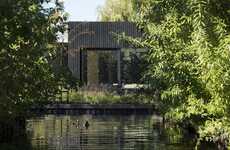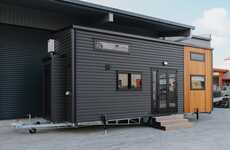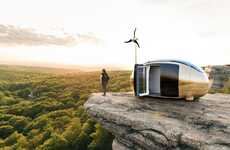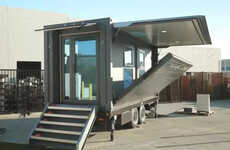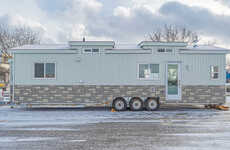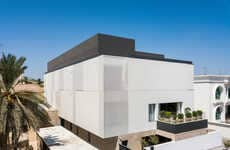
The Pod Space 'Home Pod' Has Space for a Family of Four
Michael Hemsworth — May 15, 2020 — Art & Design
The Pod Space 'Home Pod' isn't a tiny home per se but is definitely more on the smaller side when compared to conventional residential dwellings to offer consumers a new iteration of the family home.
The prefabricated home is designed with space for four to live comfortably, and can be finished on the exterior with stained timber, profiled aluminum, thermally modified ash, durable charred Larch, western red cedar and more. The interior open-concept living space includes a large living area, two bedrooms, two bathrooms and well-sized dining space and a kitchen.
The Pod Space 'Home Pod' is achieved using FSC timber along with engineered steel and features large glass windows that allow natural light to pour in, while also offering expansive views of the surrounding environment.
Image Credit: Pod Space
The prefabricated home is designed with space for four to live comfortably, and can be finished on the exterior with stained timber, profiled aluminum, thermally modified ash, durable charred Larch, western red cedar and more. The interior open-concept living space includes a large living area, two bedrooms, two bathrooms and well-sized dining space and a kitchen.
The Pod Space 'Home Pod' is achieved using FSC timber along with engineered steel and features large glass windows that allow natural light to pour in, while also offering expansive views of the surrounding environment.
Image Credit: Pod Space
Trend Themes
1. Tiny Homes - The trend of smaller, prefabricated homes with space-saving designs offers an opportunity for disruptive innovation in affordable housing.
2. Prefabricated Homes - The trend of prefabricated homes with customizable finishes and modular designs offers an opportunity for disruptive innovation in construction technology and efficiency.
3. Open-concept Living - The trend of open-concept living spaces in smaller homes offers an opportunity for disruptive innovation in multi-functional furniture and flexible, modular layouts.
Industry Implications
1. Construction - The construction industry can capitalize on the trend of prefabricated and modular homes with innovative manufacturing techniques and automated assembly processes.
2. Interior Design - The interior design industry can capitalize on the trend of tiny homes with space-saving designs by creating multi-functional furniture and innovative storage solutions.
3. Real Estate - The real estate industry can capitalize on the trend of smaller, more affordable homes by marketing alternative housing options to buyers and investors.
6.8
Score
Popularity
Activity
Freshness




